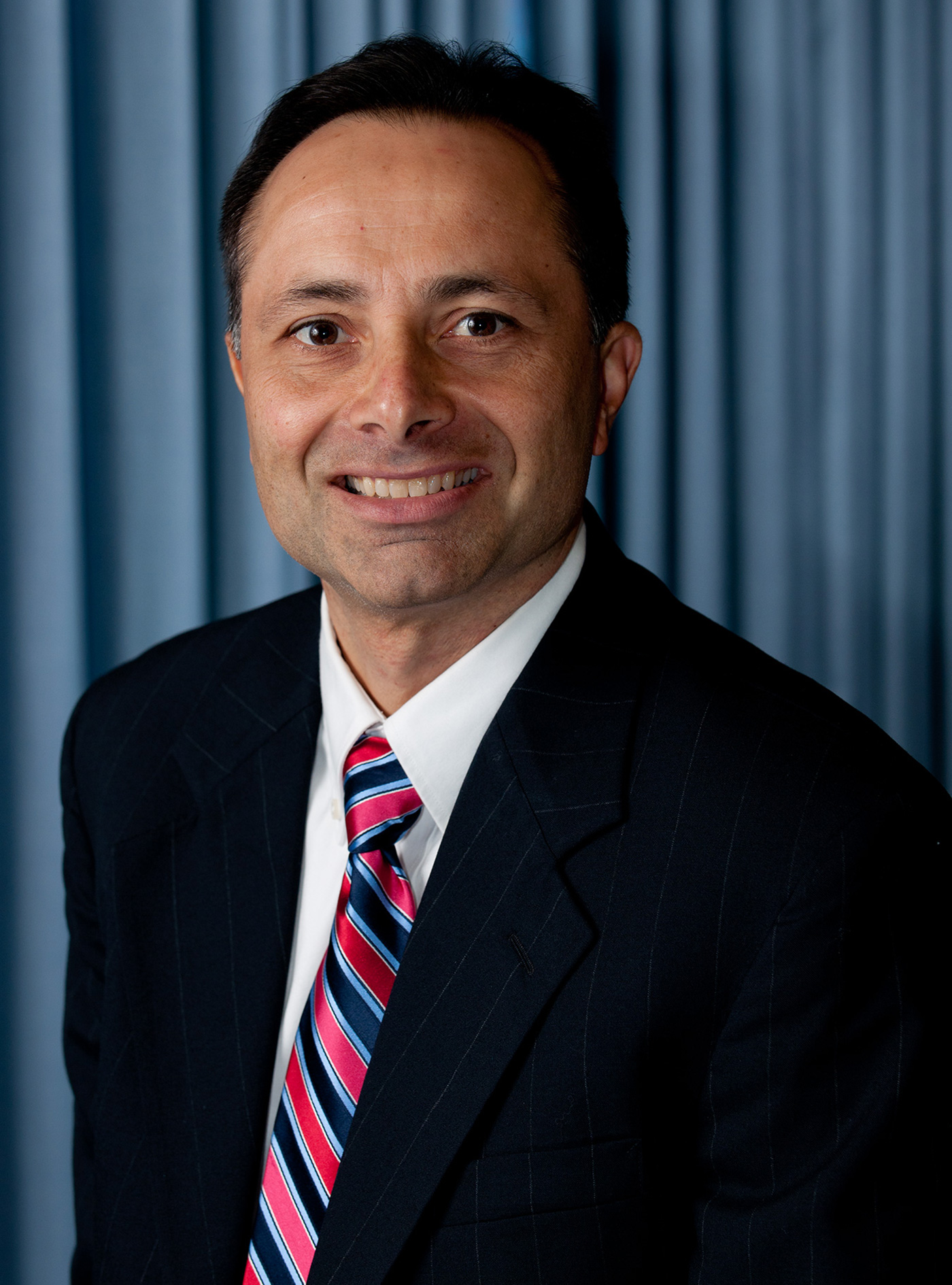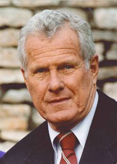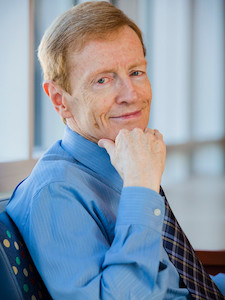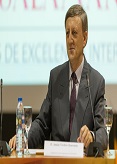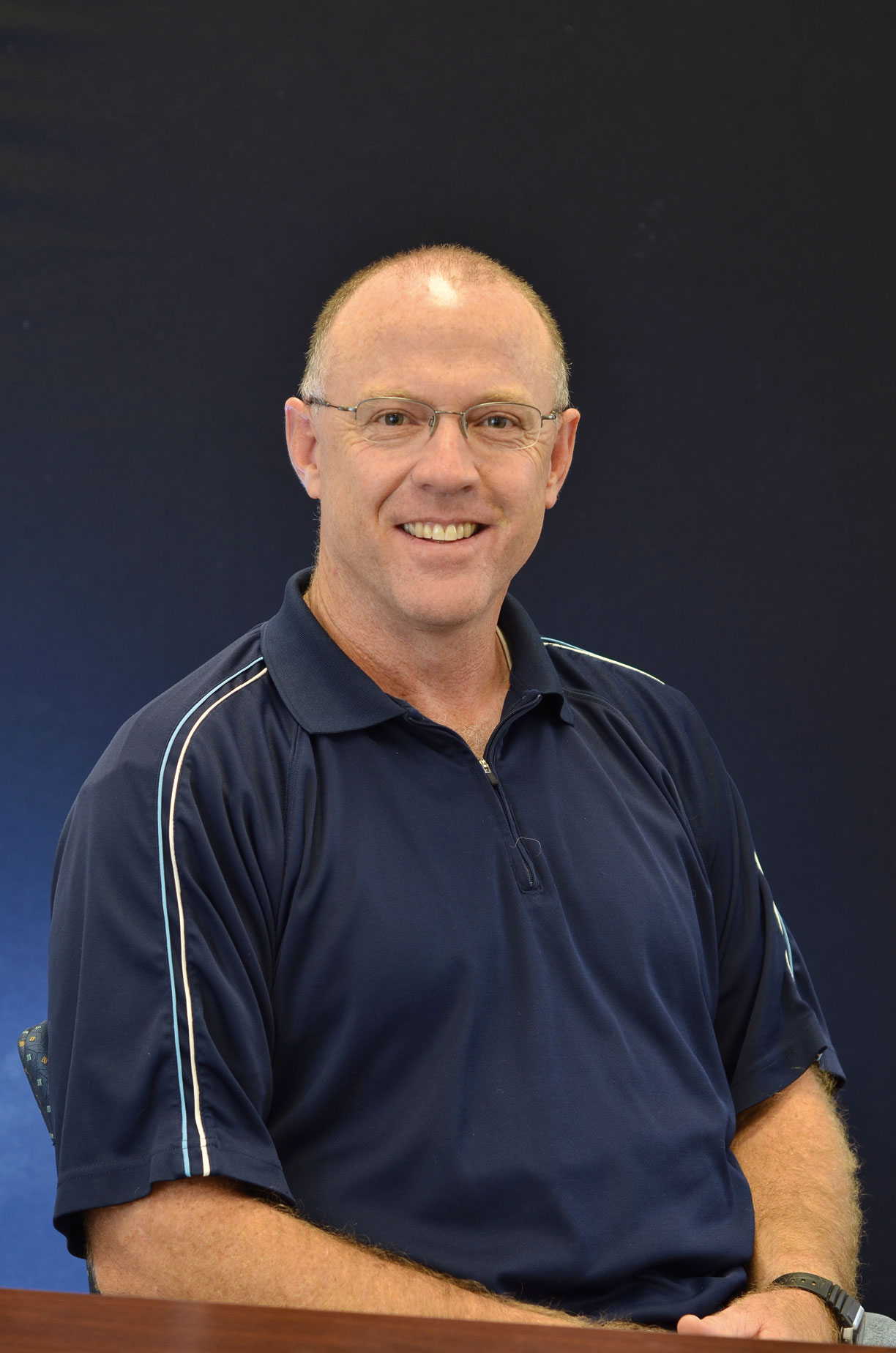Scientific Program
Keynote Session:
A PHP Error was encountered
Severity: 8192
Message: trim(): Passing null to parameter #1 ($string) of type string is deprecated
Filename: pastconference/past-program-schedule.php
Line Number: 239
Backtrace:
File: /efsdata/meetingsint-com/application/views/pastconference/past-program-schedule.php
Line: 239
Function: trim
File: /efsdata/meetingsint-com/application/controllers/Pastconference.php
Line: 128
Function: view
File: /efsdata/meetingsint-com/index.php
Line: 317
Function: require_once
Title: Recent developments in wind turbine sensing for structural health monitoring
Biography:
Dr. Christopher Niezrecki is Professor and Chair of Mechanical Engineering at the University of Massachusetts Lowell, the Co-Director of the Structural Dynamics and Acoustics Systems Laboratory (http://sdasl.uml.edu/), the Director of the Center for Wind Energy at UML (www.uml.edu/windenergy), and also the Director of the National Science Foundation-Industry/University Cooperative Research Center for Wind Energy Science, Technology and Research (WindSTAR). He has been directly involved in structural dynamics, acoustics, smart structures and materials, and sensing research for over 23 years, with more than 100 publications. He has conducted over $11M USD of sponsored research through grants from numerous federal and state agencies as well as several companies
Abstract:
A significant amount of interest exists in performing wind turbine structural health monitoring, characterization, and evaluation. The presentation highlights some recent advances in optical sensing, acoustic methods, infrared, UAV sensing, and radar technologies that can be applied to characterize wind turbine structural health, structural dynamics, damage, and embedded defects. Non-contacting, full-field surface dynamic measurements are presented that leverage three-dimensional (3D) digital image correlation (DIC), point tracking (PT), and motion magnification methods. The approaches are able to obtain full-field geometry data, in three dimensions. Information about the change in geometry of an object over time can be found by comparing a sequence of images and virtual strain gages (or position sensors) can be applied over the entire visible surface of an object of interest. Non-contact structural dynamic information can be extracted. Results from structural interrogation of acoustic monitoring, infrared sensing, and radar sensing are also presented on a variety of test objects. Several examples of various sensing technologies are presented on wind turbine rotors and blades.
A PHP Error was encountered
Severity: 8192
Message: trim(): Passing null to parameter #1 ($string) of type string is deprecated
Filename: pastconference/past-program-schedule.php
Line Number: 239
Backtrace:
File: /efsdata/meetingsint-com/application/views/pastconference/past-program-schedule.php
Line: 239
Function: trim
File: /efsdata/meetingsint-com/application/controllers/Pastconference.php
Line: 128
Function: view
File: /efsdata/meetingsint-com/index.php
Line: 317
Function: require_once
Title: The role of enhanced oil & gas recovery in the United States and International development & the effects on pricing International development, exports, and imports
Biography:
Davis L. Ford is a practicing environmental engineer with over fifty years of experience in the field. In addition he serves on the faculty at The University of Texas at Austin as an Adjunct Professor and a Visiting Professor of Petroleum Engineering at Texas Tech University. He has published hundreds of technical papers, has co-authored or contributed to ten textbooks, written several biographies, and also co-authored a children’s book. Dr. Ford lectures extensively throughout the United States, Europe, South America, and Asia. Dr. Ford received his bachelor’s degree in Civil Engineering at Texas A&M University and his master's and doctorate degrees in Environmental Engineering from The University of Texas at Austin. He is a Distinguished Engineering Graduate of both Texas A&M University and The University of Texas as well as a Distinguished Alumnus of Texas A&M. Dr. Ford was elected to The National Academy of Engineers (affiliated with the National Academy of Science and the National Academy of Medicine) in 1997. In 2005, he was inducted into The Academy of Medicine , Engineering, and Science at Texas. He is an Eagle Scout. He resides in Austin, Texas, with his wife of more than fifty years, his three daughters close by, and ten grandchildren - nine boys and one girl.
Abstract:
The Major Producers of Oil and Gas Extraction Currently are the United States followed by Russia and Saudi Arabia with the Price of Brent Crude in the Range of $70 dollars per BBL (2018), Other Proven Reserves in the World Plan to Develop Production, Such as Chile and Argentina, China, Canada, Mexico and Norway (off shore). Moreover, Countries with a Sound GDP Will be Importing Oil and Gas as the Most Cost Effective Way, Namely from Cost Competition in the International Market. This Presentation Includes Areas of Proven Crude, which will be Competitively Prices Free on Board to Energy Deficit Countries, with the Free Market Pricing. This Presentation will Include Updates on Extraction of Tight Oil and Gas Being Environmentally Sound and Protecting Domestic Water Supplies.
Case Histories of the Extensive Evolution of Oil and Gas Production in the United States will Address the Following Technical and Environmental Issues. Along with Global development which in the future can have an effect on GDP, export/import changes, and global effects on pricing.
Case Histories which Address Hydraulic Fracting below Potable Water Supplies, Proper Casing, and Now Both Vertical and Horizontal Drilling. Moreover, cost Subsidies and Economic Pricing of Oil and Gas Extraction, Hydro Power, Coal, Nuclear, Wind, and Solar. There are no “Dry Holes” and more Attributable of Highly Advance Geological Technology. Safety and Economic Payback to Major Issues are Also Discussed in the Presentation.
A PHP Error was encountered
Severity: 8192
Message: trim(): Passing null to parameter #1 ($string) of type string is deprecated
Filename: pastconference/past-program-schedule.php
Line Number: 239
Backtrace:
File: /efsdata/meetingsint-com/application/views/pastconference/past-program-schedule.php
Line: 239
Function: trim
File: /efsdata/meetingsint-com/application/controllers/Pastconference.php
Line: 128
Function: view
File: /efsdata/meetingsint-com/index.php
Line: 317
Function: require_once
Title: Strong-acid compatible, earth-abundant-element, molecular water oxidation catalysts for solar fuel production
Biography:
Craig L. Hill (PhD, MIT, NSF postdoc, Stanford) is the Goodrich C. White Professor of Science at Emory University. His group conducts research on solar fuels and other aspects of green energy, multifunctional nanomaterials and new types of anticancer therapeutics. He and his ~130 co-workers over the last 3 decades have published ~420 papers that have been cited 28,600 times for an H index of 85 (Google Scholar). CLH is a Fellow of the AAAS, the Academia Europaea, the Victorian Institute of Chemical Sciences and the Royal Society of Chemistry. He has edited multple journals, served or chaired many national and international research panels and chaired or organized 7 international scientific conferences.
Abstract:
Deeper insights and commensurely better versions of the three interconnected functional units in solar fuel generation systems are needed: water oxidaton catalysts (WOCs), H2O and CO2 reduction catalysts and light-absorbing-charge-separating structures. Transition-metal-substituted polyoxometalates (POMs) have been investigated by many groups as WOCs because they combine the advantages of molecular (homogeneous) catalysts (their properties can be studied in depth experimentally and computationally), with the advantages of non-molecular (heterogeneous) catalysts (carbon-free and very robust). Many groups have studied and developed POM WOCs that contain only earth-abundant elements since our first report.1-3 A grand challenge in water oxidation and solar fuel production is the development of earth-abundant-element, effective WOCs that also function in strong acid. We will report new earth-abundant-element POMs that are both very good in strong base and, more importantly, in strong acid. Five different forms of a POM containing 9 cobalt centers with the polyanion formula [Co9(OH)(H2O)6(HPO4)2(PW9O34)3]16- have been prepared and structurally characterized (XRD, NMR and other methods). Figure 1 shows the X-ray crystal structure of the (Cs+)9 salt. Despite different unit cells, all give derivatives catalyze water oxidation in strong acid but at different rates, with the Y3+ salt being the most effective. Despite different reactivities and crystal structures, the tafel slopes for the 4 insoluble derivatives are the same indicating that all oxidize water by a similar or identical mechanism.
Good methods for immobilization of homogeneous catalysts on photoelectrodes is also a central issue in solar fuel generation. We will discuss the preparation and characterization of POM-WOC-SC (SC = semiconductor = TiO2 or Fe2O3) photocatalytic water oxidizing electrodes. 3-5 We recently demonstrated that POM-WOC-SC systems can be stabilized by appropriate layers (depths) of Al2O3 deposited by atomic layer deposition (ALD; see Figure 1).5
Oral Session 1:
- Sustainable Energy

Chair
Craig L. Hill
Professor of Science at Emory University, USA

Co-Chair
Enhua Wang
Beijing Institute of Technology, China
Title: Oral presentation
Biography:
Yihuai Hu got his Ph.D. of Marine Engineering from Wuhan University of Technology in 1993, and then worked in the Huazhong University of Science and Technology as a post-doctorial researcher until 1995. He immediately joined Shanghai Maritime University and has been working there since then. In 2006 he worked in the University of New South Wales in Australia as a visiting professor and he is now a professor in Shanghai Maritime University.
He is also the member of Shanghai Society of Internal Combustion Engine, member of China Ship Building Society and member of Shanghai System Simulation Society, member of China New Energy Society. Over the past two decades, he has published 110 academic papers and 6 books, guided 6 research projects and participated in 24 projects. He has obtained 11 awards and honors for teaching, research and technical development by Shanghai Education Committee and Communications Ministry of China.
Abstract:
Wind sail has high efficiency for wind energy utilization on board ship, which has great significance on ship energy-saving and emission-reduction. A set of walker sail model was made and its aerodynamic characteristics were simulated with Fluent software. The influences of structural parameters of both diversion airfoil and rear airfoil on the walker sails’ aerodynamic characteristics are analyzed. These parameters includes diversion airfoil length, diversion airfoil deflective angle, rear airfoil chord length, rear airfoil thickness, rear airfoil deflective angle and rear airfoil offset clearance. It is discovered that the main function of diversion airfoil is to guide airflow and regulate the gap between main airfoil and rear airfoil, improving airflow condition, reducing flow separation on the surface of rear airfoil and in this way increasing the lift coefficient. The calculated results are ultimately verified by wind tunnel experiments. The diversion airfoil chord length should be as short as possible based on the requirements of its working functions and walker sail arrangement on board ship. If the deflective angle is too large and beyond the optimum range, the lift coefficient will be decreased. Longer diversion airfoil chord length and larger deflective angle could increase the resistance coefficient. The longer the displacement of rear airfoil is, the larger the lift coefficient will be. The displacement of rear airfoil has little influence on the drag coefficient. Finally, some important conclusions are drawn out, which lays the theoretical foundations for walker sail applications on board ship
A PHP Error was encountered
Severity: 8192
Message: trim(): Passing null to parameter #1 ($string) of type string is deprecated
Filename: pastconference/past-program-schedule.php
Line Number: 354
Backtrace:
File: /efsdata/meetingsint-com/application/views/pastconference/past-program-schedule.php
Line: 354
Function: trim
File: /efsdata/meetingsint-com/application/controllers/Pastconference.php
Line: 128
Function: view
File: /efsdata/meetingsint-com/index.php
Line: 317
Function: require_once
Title: P2G as a tool for sector coupling and energy transition in Germany
Biography:
Silvina Manrique has completed her PhD and postdoctoral studies from National University of Salta (Argentina) and National University of Salamanca (Spain). She has her expertise in biomass and bioenergy. She has more than 90 publications. For her research, has been awarded with the International Eco-Logical Award (2013), Bioenergy (2014), Bioenergy (2016) and has received the Distinction of "Outstanding Citizen" (2013) by the Local Deliberative Council. She has received numerous scholarships of national and international character, for training and improvement, including a stay in Europe.
Abstract:
Energy storage plays a crucial role in the countries with high level of renewable energy generation and penetration. Intermittency of wind power, and transport of increasing masses of produced renewable energy to the consumers challenge modern energy systems with a growing trend.
It is very challenging to find a relevant technology to apply for large-scale storage needs and to appropriate costs. Power-to-Gas (P2G) represents a way to produce hydrogen and inject it into the grid, with or without a process of methanation.
P2G is of a special interest for the North Sea region´s countries (especially) due to their widely developed onshore and gradually evolving offshore infrastructures. This technology is being widely discussed in both targeted countries, but Germany has been a frontrunner regarding a number of existing pilot projects.
The biggest advantage of this technology is that the infrastructure can be immediately facilitated, including transport, storage and distribution. It can diminish a number of new power lines required. However, P2G is not competitive until now with natural gas (biomethane) due to its cost factor. For further deployment, it is recommended to combine different business cases (such as mobility, balancing services, etc.).
In a nutshell, P2G is one of the existing concepts, commanding a sector-coupling character. It enables optimisation of different sectors, from heating to mobility, utilising renewable production surplus and providing flexibility. For this, P2G should be included into the Energiewende programme as it can serve not only as a broad storage system but can also contribute to low-carbon consumption of many sectors. Market access barriers in the current legal framework should be abolished by recognising PtG products and eliminating system drawbacks for sector coupling technologies. In the context of political discourse, a model for further harmonisation of coupled sectors should be discussed and planned.
Title: Investigation on the thermal and power performance of vacuum BIPV glazing and its optimization potential in high-rise buildings
Biography:
Dr. Xi Chen has 8-year experience in building simulation, renewable applications, HVAC design and microclimate studies. He published 17 papers in peer-reviewed international journals and coauthored a book in the green building area. He has also participated in more than 30 green building projects as a certified BEAM Professional and conducted massive investigation into green building rating tools over the world.
Abstract:
Due to the significant cost reduction of solar photovoltaic (PV) modules and aggravating environmental problems in the urban environment, more and more solar PV curtain walls, especially in commercial buildings, have been developed throughout the world. However, the poor thermal and sound insulation performances were usually observed in traditional solar PV curtain walls, which in turn seriously hinder their large-scale use. Although solar photovoltaic (PV) curtain walls can generate electrical power in situ, they also increase the cooling load and heating load of buildings significantly due to their high solar heat gain coefficient (SHGC) and U-Value. However, vacuum glazing, which has excellent thermal and sound insulation performance, can effectively solve the above issues for PV curtain walls. In this study, a novel high-efficient energy-saving vacuum BIPV (building integrated photovoltaic) curtain wall, which combines photovoltaic curtain wall and vacuum glazing technologies, was developed and investigated. This vacuum BIPV curtain wall can not only generate electricity in situ, but also significantly reduce the heat transfer through the building envelope due to its improved thermal insulation performance. The thermal and power performance of the vacuum PV glazing were investigated by experiments and numerical simulations. A prototype of the vacuum BIPV curtain wall was set up for a short-term outdoor testing campaign to demonstrate its thermal and power performance under typical weather conditions of Hong Kong. A comprehensive energy model was then developed to predict the dynamic power and thermal performance of the vacuum BIPV curtain wall to evaluate its annual energy saving potential compared to other advanced window technologies used in buildings in Hong Kong. Based on the simulation model, an optimum design of the vacuum BIPV curtain wall was proposed. In addition, the annual energy-saving potential for a typical high-rise commercial building with the application of miscellaneous BIPV products was estimated using the typical meteorological year weather data. BIPV characteristics were jointly optimized with other architectural parameters and the net building energy demand can be decreased by up to 60% compared with a benchmark office building in Hong Kong. The target of near-zero energy high-rise building can therefore be further approached by this integrated design optimization process. Finally, a design guideline of the advanced BIPV technology was proposed to guide its future large-scale application and commercialization.
Keynote Session:
Title: Fracture and structural integrity issues in wind turbines: Recalling miguel de cervantes and antonio vivaldi
Biography:
Dr. Jesus Toribio is a ESIS Fellow (ESIS: European Structural Integrity Society), ICF Director (ICF: International Congress of Fracture), and Chairman of ESIS TC10 Committee on Environmentally Assisted Cracking (EAC) and Hydrogen Embrittlement (HE)
He is a Founder Member of the Spanish Fracture Group and Head of Structural Integrity Research Group, Department of Materials Engineering, University of Salamanca
Abstract:
Wind turbines are key elements in the field of renewable energies. They can be considered as engineering evolutions of old-fashion windmills appearing in the master work by Miguel de Cervantes: Don Quijote de la Mancha. The main subject of this paper is related to fracture behavior and structural integrity of cold drawn pearlitic steel wires (prestressing steel wires) for wind turbine structures and foundations. At the microscopic level, cold drawing generates progressive slenderizing and orientation/alignment of the pearlitic colonies (1st microstructural level) and increasing orientation/alignment and densification of the ferrite/cementite lamellae (2nd microstructural level), thereby inducing anisotropy of fatigue and fracture resistance and its associated effect on crack paths. Special attention is paid to the fatigue phenomenon produced in the turbines as they are shaken (or agitated) by the wind, thus recalling “Agitata da due venti” by the master Antonio Vivaldi in the dramma per musica (opera) “Griselda”.
Title: Potential yield of dedicated energy crops: Results and outcomes of the Sun Grant regional feedstock partnership
Biography:
Vance N. Owens received BS, MS, and PhD degrees at Brigham Young University, Utah State University, and the University of Wisconsin-Madison, respectively. He is Director of the North Central Sun Grant Center and Professor of Plant Science at South Dakota State University. He has conducted research on production of bioenergy feedstock crops, specifically perennial species, for more than 20 years.
Abstract:
Statement of the Problem: The Sun Grant Regional Feedstock Partnership commenced in 2007 with the goal of supporting the realization of the biomass potential envisioned in DOE’s 2005 Billion Ton Report. Concluding in 2016, the partnership sought to increase the knowledge of bioenergy through coordinated feedstock research across the lower 48 states and Hawaii with partners in academia, government, and private industry. Methodology & Theoretical Orientation: The core of the research includes over 130 field trials and regional resource assessment activities focused on agricultural residues and a suite of likely dedicated energy crops. In 2013 a series of meetings was held across the US with each of the crop teams and the resource assessment team, led by the Oregon State University and Oak Ridge National Laboratory, to review, standardize, and verify yield trial data and assimilate their outcomes into a national model of biomass yield suitability. The meetings provided a way to “ground truth” yield estimates in order to accurately capture interactions of climate and soils for dedicated energy crops, including switchgrass, energycane, biomass sorghum, CRP mixtures, Miscanthus x giganteus, hybrid poplar, and willow. Findings: From these sets of funded trials and historical data, yield was estimated across spatial gradients according to soil characteristics and climate history (see Figure 1 for Giant Miscanthus example). The resulting spatial grids provide critical information for policymakers and planners of the potential productivity of these pre-commercial crops. National yield estimates, as well as overall yield across the continental USA, demonstrated potential for these diverse feedstock resources. Conclusion & Significance: Production and management data, as well as biomass composition characteristics, provide empirical support of logistic design and feedstock supply systems. These data and maps are vital for policy makers, producers, end-users, and others in the bioeconomy.
A PHP Error was encountered
Severity: 8192
Message: trim(): Passing null to parameter #1 ($string) of type string is deprecated
Filename: pastconference/past-program-schedule.php
Line Number: 239
Backtrace:
File: /efsdata/meetingsint-com/application/views/pastconference/past-program-schedule.php
Line: 239
Function: trim
File: /efsdata/meetingsint-com/application/controllers/Pastconference.php
Line: 128
Function: view
File: /efsdata/meetingsint-com/index.php
Line: 317
Function: require_once
Title: Aerodynamic optimization of wind turbine blades and wind energy
Biography:
Ramesh K. Agarwal was the Chair of the Aerospace Engineering Department at Wichita State University from 1994 to 1996 and the Executive Director of National Institute for Aviation Research from 1996 to 2001. From 1994 to 2001, he was also the Bloomfield Distinguished Professor at Wichita State University.
From 1978 to 1994, Professor Agarwal worked in various scientific and managerial positions at McDonnell Douglas Research Laboratories in St. Louis. He became the Program Director and McDonnell Douglas Fellow in 1990. From 1976 to 1978, Professor Agarwal worked as a NRC Research Associate at NASA Ames Research Center and as a Principal Research Engineer at Rao and Associates in Palo Alto, California from 1975 to 1976.
Abstract:
Wind has been used as a source of power by human society centuries before the dawn of industrial revolution. Since the beginning of the industrial age, the fossil fuels have dominated as a source of energy. Only in last couple of decade or so, because of concerns about global warming, there has been increased emphasis on using wind as a source of clean, renewable and sustainable energy source. This talk will describe the potential of wind as an important source of energy since it is available around the globe at sufficient velocities to generate significant amount of power.
It is well established that the power generated by a Horizontal-Axis Wind Turbine (HAWT) is a function of the number of blades B, the tip speed ratio λ (blade tip speed/wind free stream velocity) and the lift to drag ratio (CL /CD) of the airfoil sections of the blade. The airfoil sections used in HAWT are generally thick airfoils such as the S, DU, FX, Flat-back and NACA 6-series of airfoils. These airfoils vary in (CL /CD) for a given B and λ, and therefore the power generated by HAWT for different blade airfoil sections will vary. This lecture will show the effect of different airfoil sections on HAWT performance using the Blade Element Momentum (BEM) theory. The relatively thick airfoils DU 91-W2-250, FX 66-S196-V1, NACA 64421, and Flat-back series of airfoils (FB-3500-0050, FB-3500-0875, and FB-3500-1750), both original and optimized, are considered and their performance is compared with S809 airfoil used in NREL Phase II and III wind turbines; the lift and drag coefficient data for these airfoils sections are available. The output power of the turbine is calculated using these airfoil section blades for a given B and λ and is compared with the original NREL Phase II and Phase III turbines using S809 airfoil section. It is shown that by a suitable choice of airfoil section of HAWT blade, the power generated by the turbine can be significantly increased. Calculations are presented both for uniform wind velocity and variable wind velocity by including the dynamic inflow.
We also consider the Wind Farm layout optimization problem using a genetic algorithm. Both the Horizontal –Axis Wind Turbines (HAWT) and Vertical-Axis Wind Turbines (VAWT) of various sizes in diameter and height are considered. The goal of the optimization
problem is to optimally position the turbines within the wind farm such that the wake effects are minimized and the power production is maximized. The reasonably accurate modeling of the turbine wake is critical in determination of the optimal layout of the turbines and the power generated. For HAWT, two wake models are considered; both are found to give similar answers. For VAWT, a very simple wake model is employed.
In addition, the technologies related to windmill control will be briefly discussed. The issue of intermittency of wind generated power and its integration into the grid will be discussed. The environmental concerns and cost-effectivenes issues will also be addressed.

